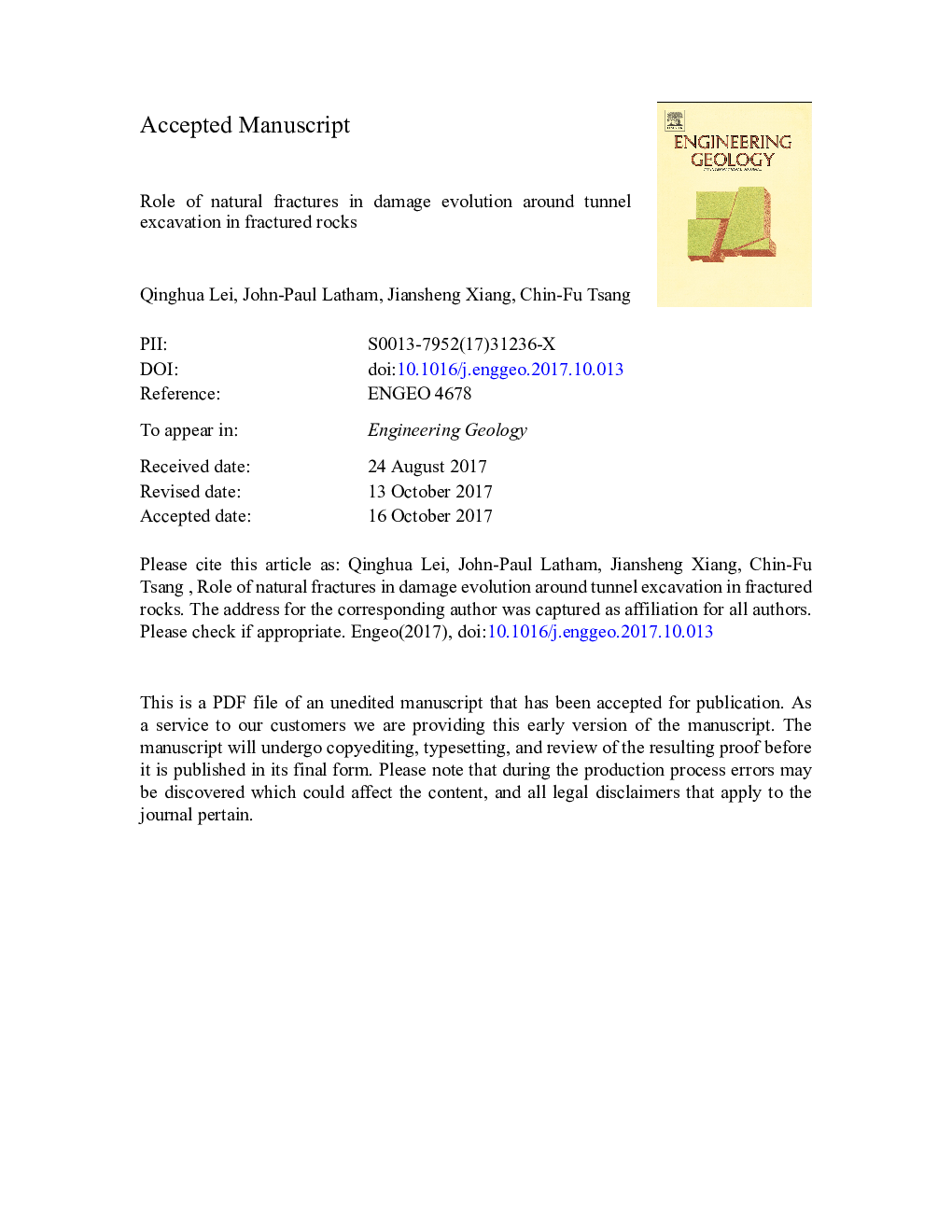| Article ID | Journal | Published Year | Pages | File Type |
|---|---|---|---|---|
| 8916024 | Engineering Geology | 2017 | 45 Pages |
Abstract
This paper studies the role of pre-existing fractures in the damage evolution around tunnel excavation in fractured rocks. The length distribution of natural fractures can be described by a power law model, whose exponent a defines the relative proportion of large and small fractures in the system. The larger a is, the higher proportion of small fractures is. A series of two-dimensional discrete fracture networks (DFNs) associated with different length exponent a and fracture intensity P21 is generated to represent various scenarios of distributed pre-existing fractures in the rock. The geomechanical behaviour of the fractured rock embedded with DFN geometry in response to isotropic/anisotropic in-situ stress conditions and excavation-induced perturbations is simulated using the hybrid finite-discrete element method (FEMDEM), which can capture the deformation of intact rocks, the interaction of matrix blocks, the displacement of natural fractures, and the propagation of new cracks. An excavation damaged zone (EDZ) develops around the man-made opening as a result of reactivation of pre-existing fractures and propagation of wing cracks. The simulation results show that when a is small, the system which is dominated by large fractures can remain stable after excavation given that P21 is not very high; however, intensive structurally-governed kinematic instability can occur if P21 is sufficiently high and the fracture spacing is much smaller than the tunnel size. With the increase of a, the system becomes more dominated by small fractures, and the EDZ is mainly created by the coalescence of small fractures near the tunnel boundary. The results of this study have important implications for designing stable underground openings for radioactive waste repositories as well as other engineering facilities that are intended to generate minimal damage in the host rock mass.
Keywords
Related Topics
Physical Sciences and Engineering
Earth and Planetary Sciences
Geotechnical Engineering and Engineering Geology
Authors
Qinghua Lei, John-Paul Latham, Jiansheng Xiang, Chin-Fu Tsang,
